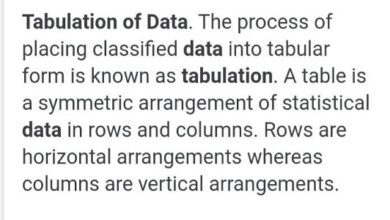What is ISBN/Structure/importance/functions/Receiving and denial of ISBN
ISBN, what is it?
ISBN stands for International Standard Book Number. Translating into Portuguese, International Standard Book Number.
Basically, it is a numbering that identifies and individualizes books and other publications according to author, country, publisher and edition number. It works like a RG.
This means that each publication has its own ISBN.
Works with the ISBN numerical series are all cataloged and included in a system internationally recognized by more than 200 countries!
This only facilitates the sharing of information about the works in different systems around the planet.
Due to its international operations, the ISBN is controlled by an International Agency, which delegates functions to national agencies.
In Brazil, the agency responsible for issuing ISBNs, since 2020, is the Brazilian Book Chamber (CBL). Previously, this role was the responsibility of the National Library.
Structure of the International Standard Book Number
It is important to know that the International Standard Book Number is currently made up of 13 numbers. But the ISBN structure was not always like this. Until 2007, works were registered with only 10 digits.
However, the volume of identifiers generated was so great that it was necessary to add the prefix 978 to the new codes.
So it’s quite likely that in newer books, for example, you’ll always find an ISBN that starts with 978.
Now, if anyone refers to ISBN 10, you already know: those are 10 digits. The ISBN 13 are the newest, 13 digits.
To make it easier to see: the Annals of the Teaching, Research and Extension Week of UNIVASF , for example, were published in 2020 and have the ISBN number 978-65-5941-167-2.
But what, in fact, does this set of numbers represent? The ISBN structure is formed by 5 elements. Let us take as an example the code of the Annals of UNIVASF:
- 978 = It is the GTIN code. These first three digits determine the publication’s barcode, known as the European Article Number. This prefix 978 is used in the publishing market.
- 65 = Registrant group or parents. It serves to identify the country of origin of the publication. Brazil has codes 65, which is more recent, and 85, which is older and is no longer used due to the high demand for publications generated by the country.
- 5941 = Registrant or publisher element. Identifies the editor responsible for the publication. The number of digits of the registrant element is variable and can reach up to 7, depending on the number of publications managed by the publisher.
- 167 = Publication. It is the number that identifies the publication, it can contain up to 6 digits.
- 2 – Check digit. The control digit is the element that guarantees the publication’s individuality, that is, that it is unique.
Why is the ISBN so important?
Because it represented a milestone in the publishing market. After its creation, it became much easier to organize and improve the processes of production, distribution, sales analysis and storage of bibliographic data around the world.
So, regardless of the language or country where you have published your monograph, e-book or physical book, your publication can be found from anywhere on the planet using this ISBN code.
What are the functions of the ISBN?
Basically, as we have already discussed here, the ISBN serves to individualize publications and catalog them in an international system.
If we are going to make a detailed analysis of its functions, we can say that it serves to:
- Save time and money when cataloging publications in libraries and bookstores. Now, you don’t have to delay to describe publication details. The ISBN will pull all the information you need.
- Make viable the operation of electronic point-of-sale systems in bookstores.
- Facilitate database updates, such as those of bookstores and libraries.
- Provide complete details about a publication, such as title, author, country, publisher, and edition number.
- Organize the arrangement of books in libraries.
Which works receive the ISBN?
Check the complete list of publications that receive ISBN according to the Brazilian Book Chamber website:
- proceedings, seminars and meetings
- contest handouts
- articles from a specific serial (not the entire serial)
- e-book applications (electronic books), as long as they have significant textual content and can be considered a monographic publication and available to the public
- audiobooks, whether physical or accessible on the internet
- video classes and courses (only if they are educational and commercialized).
- separate individual chapters made available by the publisher
- exhibition catalogs with explanatory text
- logbook strictly linked to educational projects – elementary school
- speeches (textual version made public)
- guides
- art books and picture books with a title page and/or text or captions
- books on CD and DVD (audiobooks)
- printed books – maps (specifying their scale) and atlases
- publications in braille – children’s publication (games and pastimes that contain educational activities)
- electronic publications, on the Internet or on physical media (machine readable tapes, floppy disks or CD Rom)
- educational or instructional software
- reports (which are public)
- scanned copies of print publications
- diaries, baby album, baby book. (they will only receive ISBNs if they contain meaningful and explanatory text)
- albums to color, paint, cut out or set up (aimed at educational content and with meaningful and explanatory texts)
- sticker album (aimed at educational content and with meaningful and explanatory texts)
In the case of monographic publications, those that have:
- different editions;
- different product formats (CD, digital, printed…);
- different languages;
- different restrictions and forms of use.
Which publications do not receive ISBNs?
Not every publication is eligible to receive an ISBN. Also according to the CBL, they do not receive the identifier:
- schedules (pure and simple)
- classes, courses (in videos), except educational
- sticker album without any text, sticker packs
- almanacs
- annals of an institution (ex: Annals of the National Library)
- yearbooks
- baby album, maternity album, sticker album (no explanatory text and/or meanings)
- electronic or printed newsletters
- school notebooks, conference program notebooks
- calendars
- astronomical charts
- information booklets
- catalogs for dissemination
When to request a new code?
In some cases, it will be necessary to request a new ISBN. Are they:
- If there is a significant change in the content/text of the work (another edition of the work will be considered);
- Publications edited under the imprint of the new publisher;
- If the same title receives a different format. For example, you published a book in physical format and now you want to publish it in digital format (e-book). In this case, it will be necessary to generate a new ISBN for the e-book, as the format is different.
How much does the ISBN cost?
Is the ISBN free? Unfortunately not! CBL charges to generate each ISBN and also to generate the publication’s barcode.

